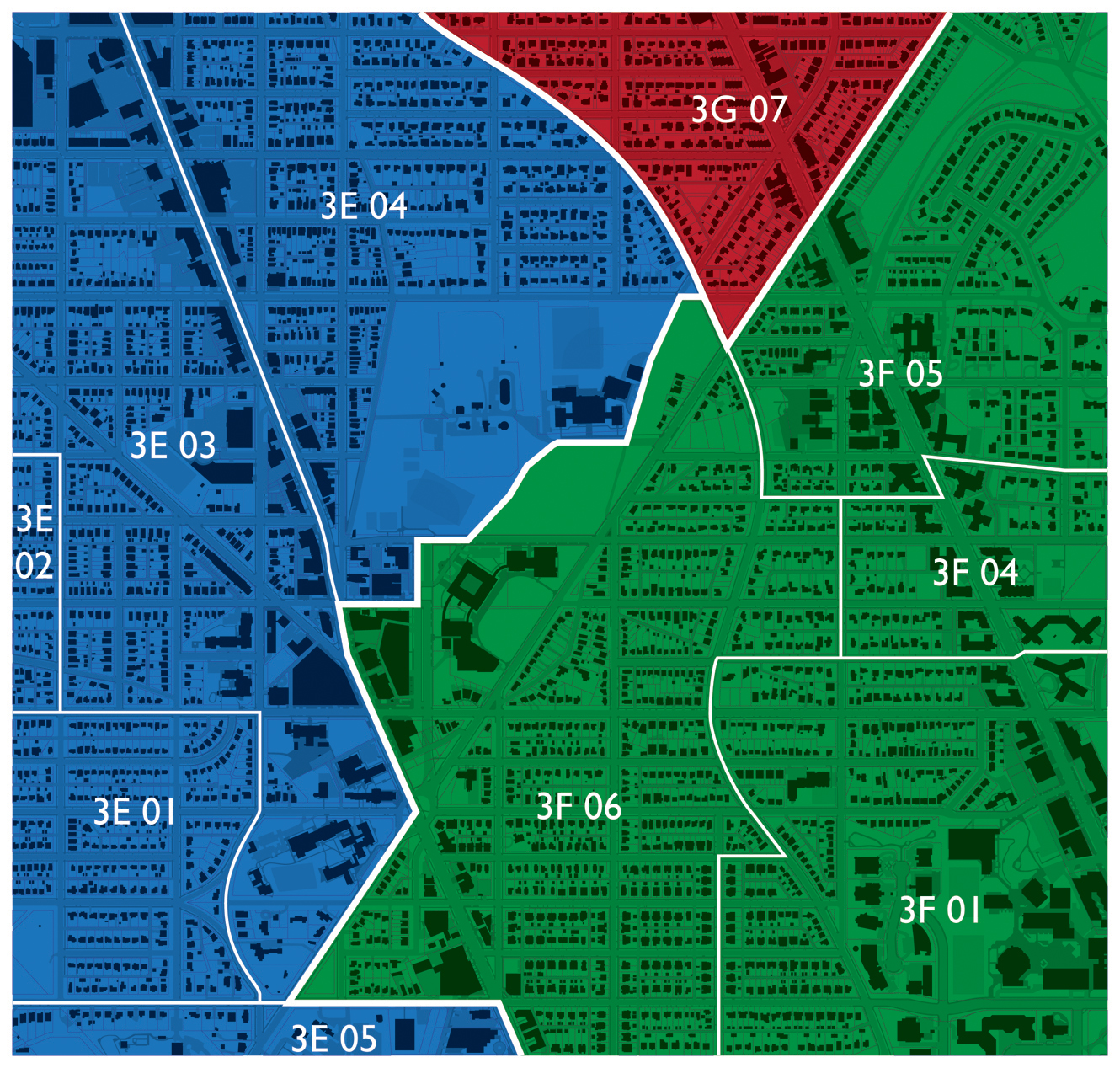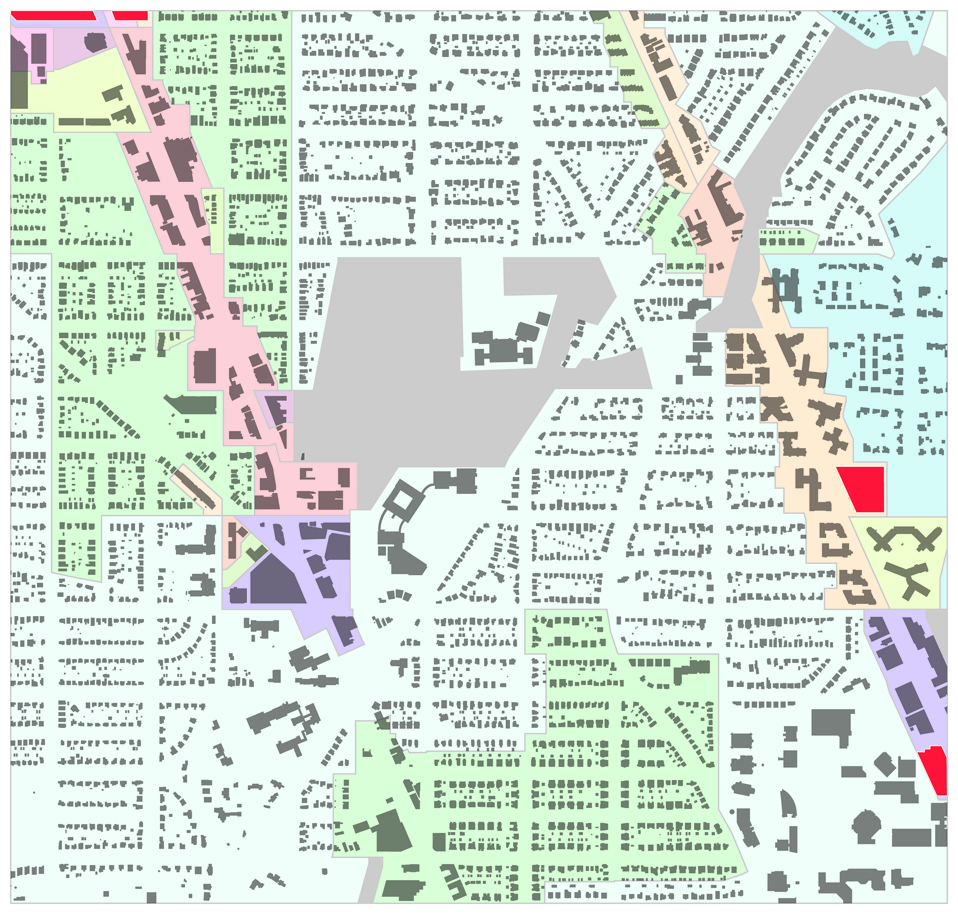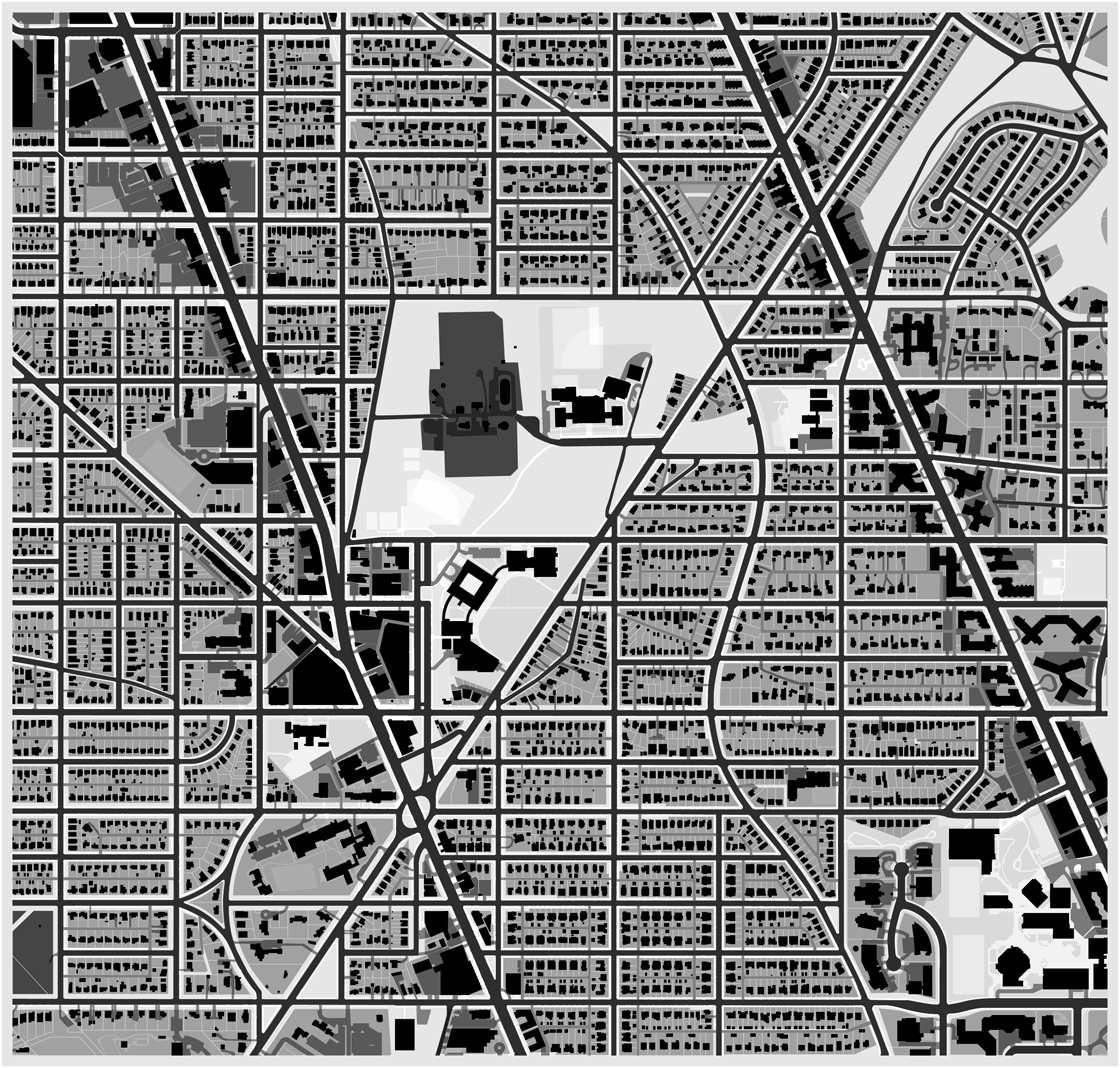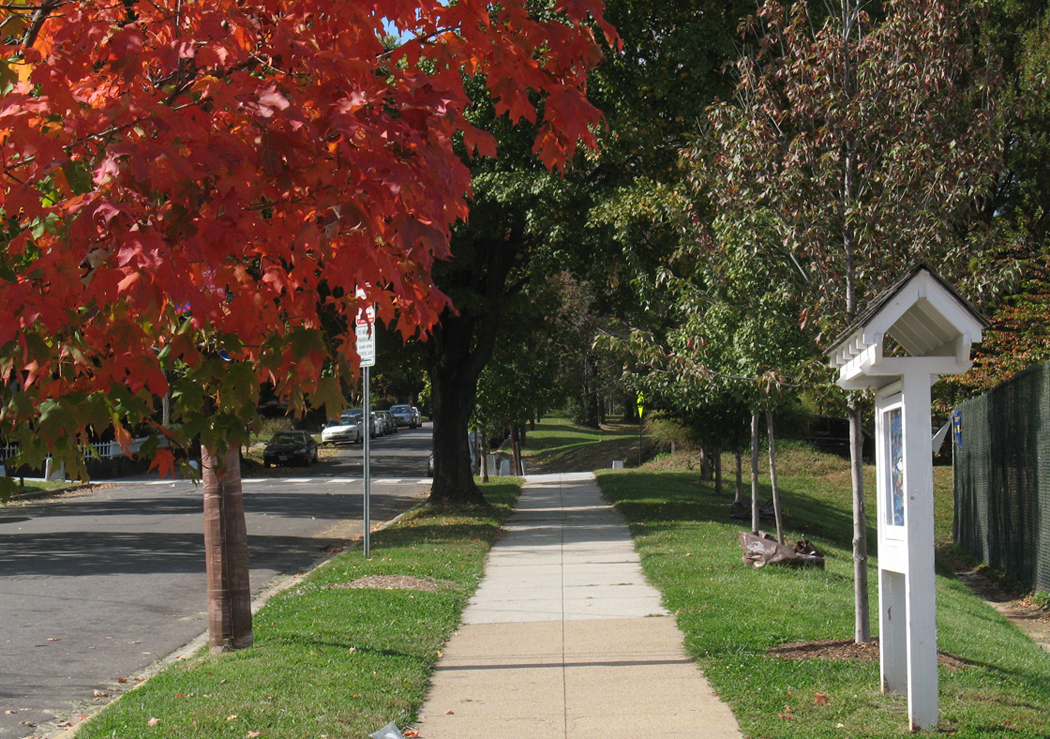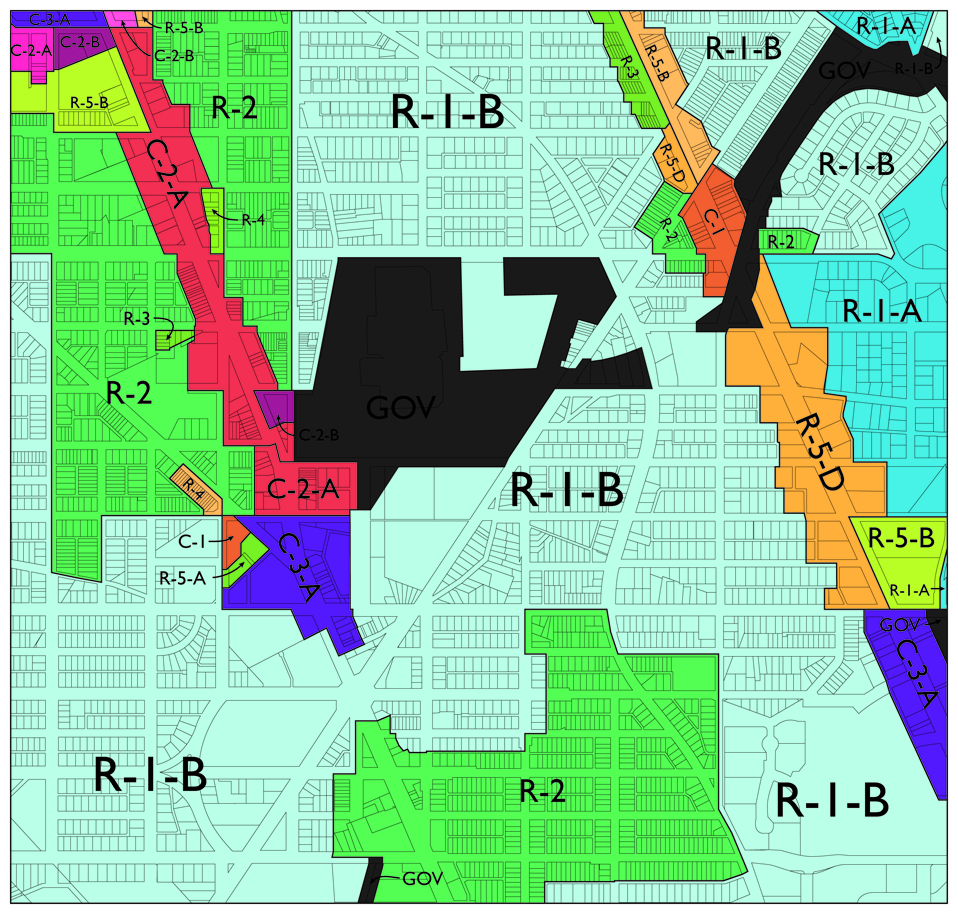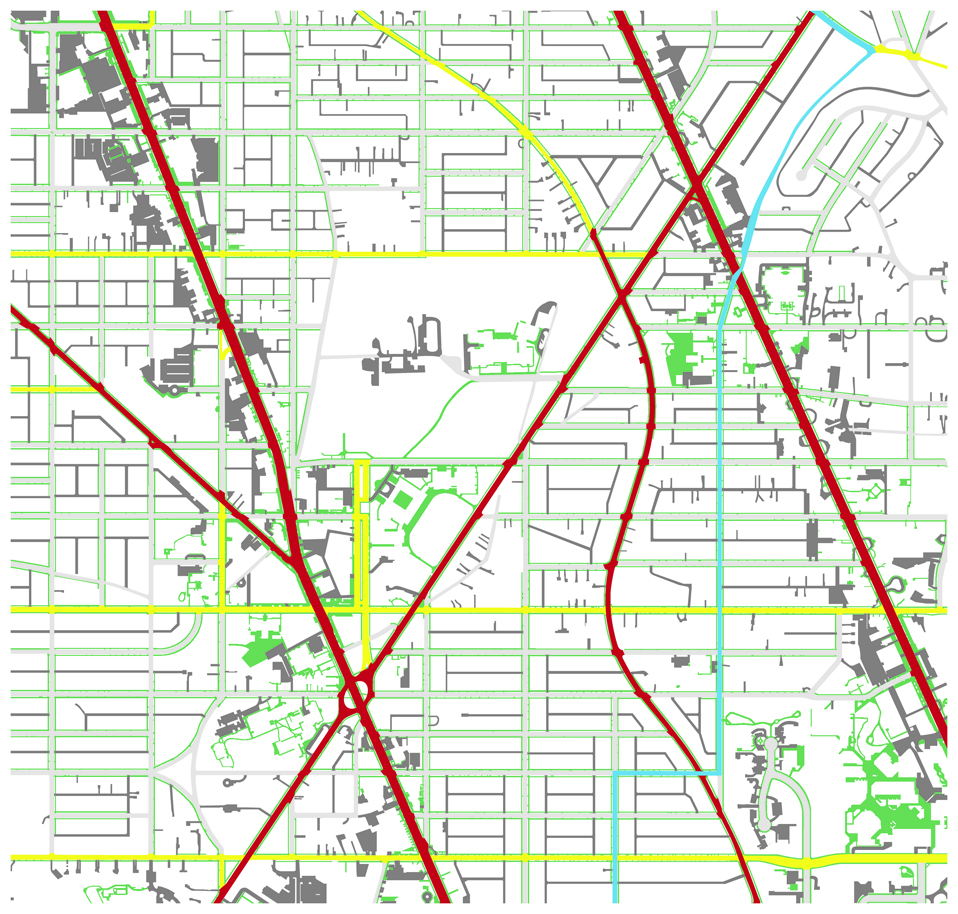One more legal aspect worth mentioning are the Advisory Neighborhood Councils in any given site. There are three ANCs in the subject area, 3E, 3F, and 3G. The division between these three wards is at the park, as seen below.
As you can see, each ANC consists of a handful of single-member Districts, which elect the individual neighborhood councillors. Because of the different densities in the project area, the number of SMDs in an ANC varies, as does the size of the SMD. So, 3F04, which represents a cluster of apartment buildings, is geographically small, while 3F03 is vast because it mostly represents a handful of people, deer, and some of the more intelligent trees.
